F25
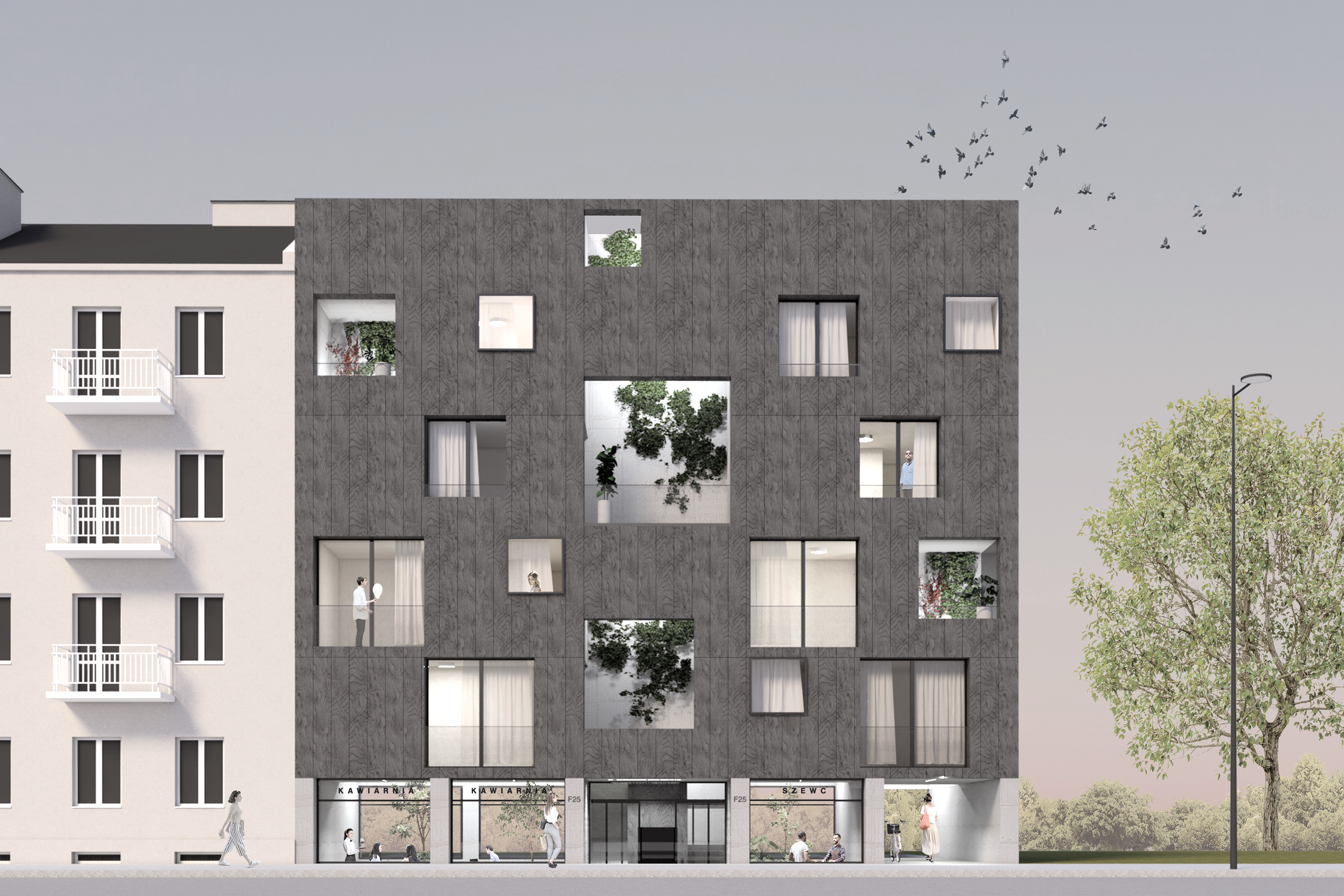
wooden residential building with retail area
With the F25 project – we wanted to remind you of the heritage of building wooden objects in Warsaw’s Praga district. The facility’s aim is to invite the local community to integrate with its residents and people inspired by the district.
The Warsaw district of Praga is perceived as an exceptional place, noticeably distinct from other
districts of Warsaw.
That is because this particular part of the capital city has survived almost intact to the present day. The district of Praga retained its unique atmosphere, urban arrangement, scale and numerous remains from the days long gone. In contrast to the often striking changes that were implemented on the other side of the Vistula river, this district had mostly withstood what can only be described as unsightly development practices of the 1990s and 2000s, which destroyed the unique character of the old districts due to practices consisting in the erection of fence developments and the pursuit of any additional apartment space for sale.
In the district of Praga, multi-generational relations between neighbours still existed; so did the local patriotism. Most of its inhabitants knew each other. Here, craftsmen performed all the necessary repairs and rendered their services. Instead of going to a discount store, local people chose to do their shopping at a nearby market.
For some time now, very slowly, the right bank of Warsaw has started to change. Some of the charming elements of this landscape are forgotten. The vacancies are starting to be renovated. A revitalization program for this area has emerged. Larger areas, e.g. after old, ruined factories and warehouses, are changed, adopted and filled with a newly designed mix of functions. New “fashionable places” are created on the basis of specialist analyzes of space commercialization.
In opposition to such practice, we would like to draw your attention to the fact that the atmosphere and history of this place – old Praga and its smaller, modest buildings: e.g. old forges, shoe factories or apartment houses. These functions have often been used by professions not so often visible nowadays.
This project, ordered by a private investor, could have looked polite and clichéd. The elevation could have been made of brick referring to unplastered factory buildings and the function could have been typically commercial as it common for the sale of “fashionable” micro apartments. As conscious designers, we saw the potential of this plot and proposed a facility that would serve a slightly different function. It would also be an intimate residential building with services, but functioning a bit differently. The F25 facility’s aim is to invite the local community to integrate with future users and residents inspired by this district. In the building, we have planned 7 apartments and 3 commercial premises for people who would be able to use the facility together according to specific rules. They would be artists, craftsmen, creators and researchers. The rent of such a place would be paid by the tenant or a grant would be awarded to cover his residence by various cultural institutions from Poland or abroad. It would be a bit of an architectural platform and cooperative where the interaction and exchange of views of residents and thoughts would take place in the building space, not only online. The effects of this ecosystem would be available to everyone.
With the F25 project – we wanted to remind you of the heritage of building objects from wood, which is a vanishing but important element of Praga district. By the way, the times when we start to think about ecology more intensively motivated us to take up the topic of the project, which is mostly based on renewable and low-CO2-emission construction and materials, both during construction and operation.
Our project is a manifesto and at the same time a sample of what valuable can be found in Warsaw’s Praga district.
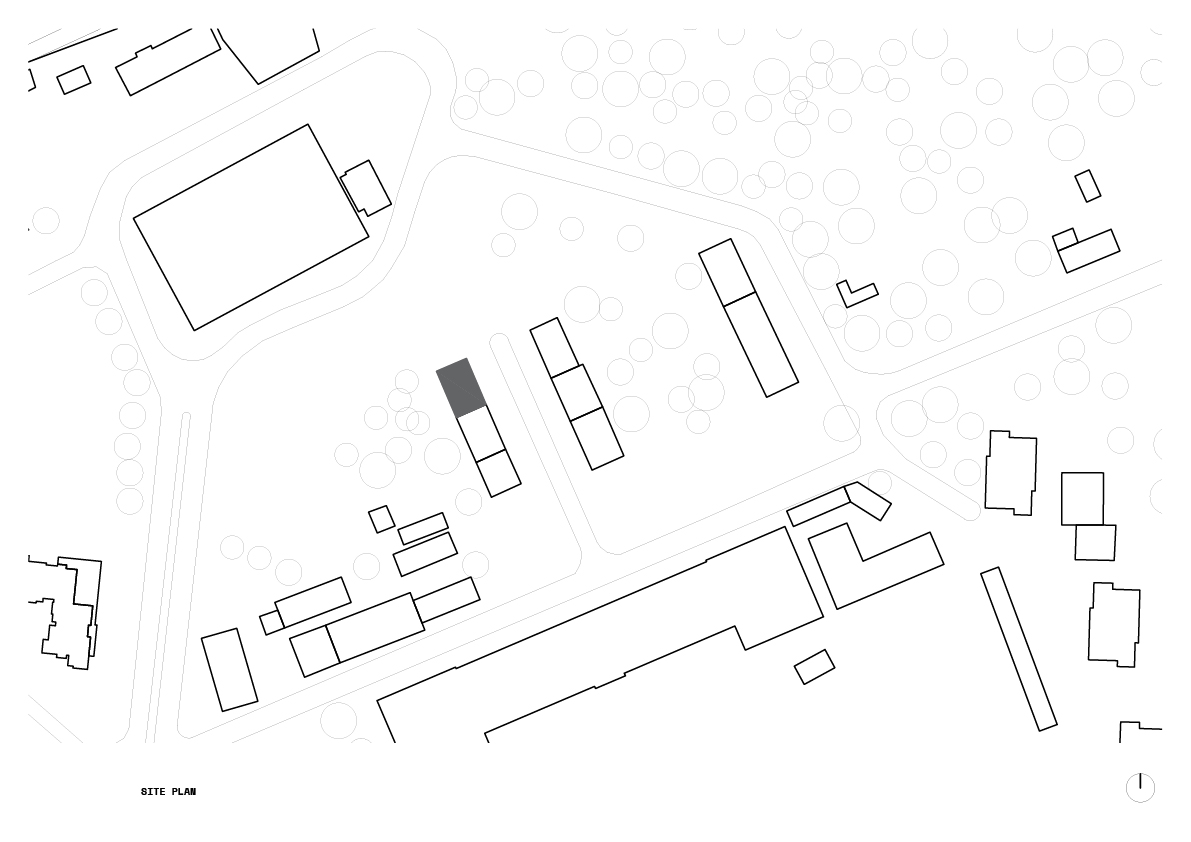
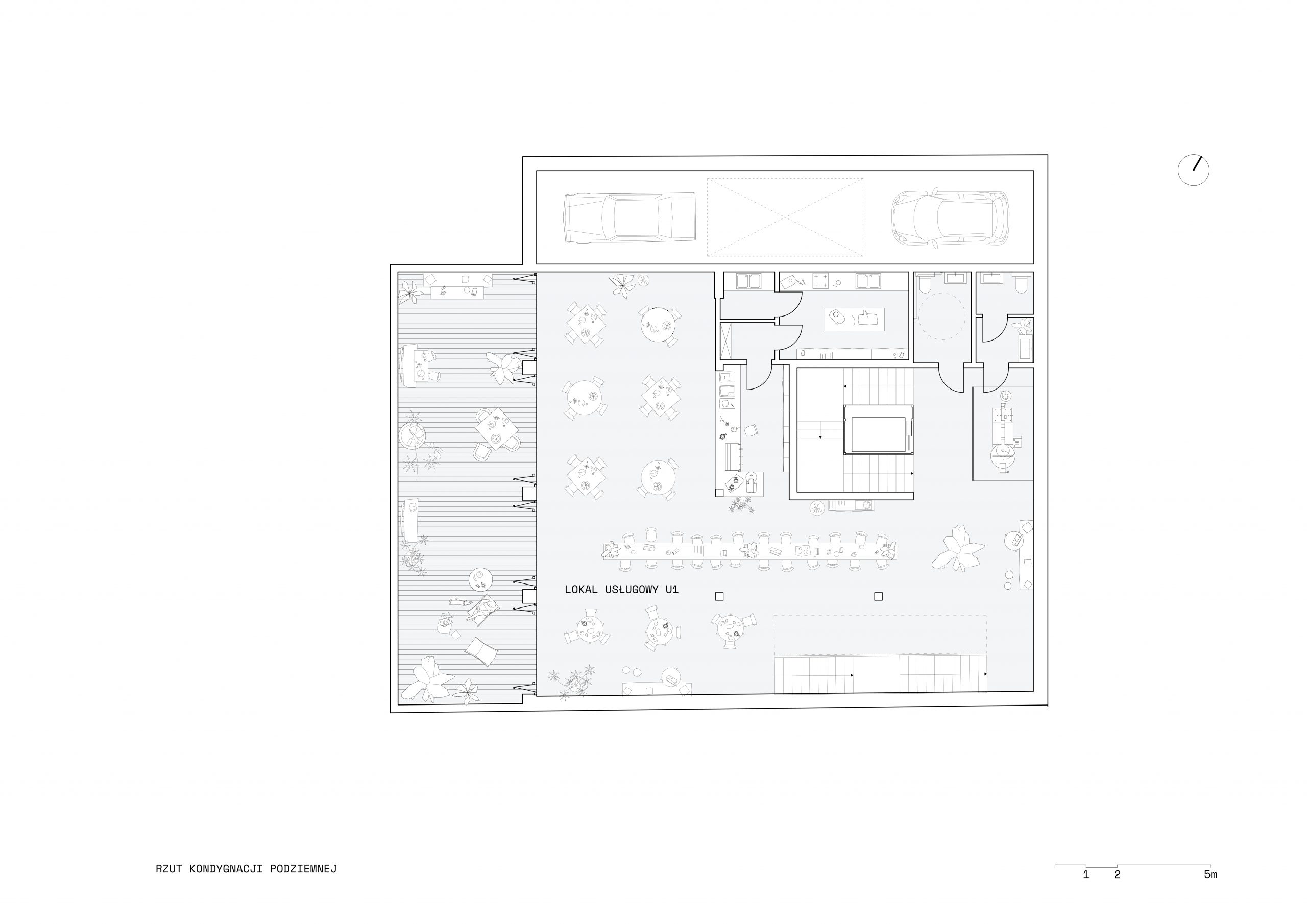
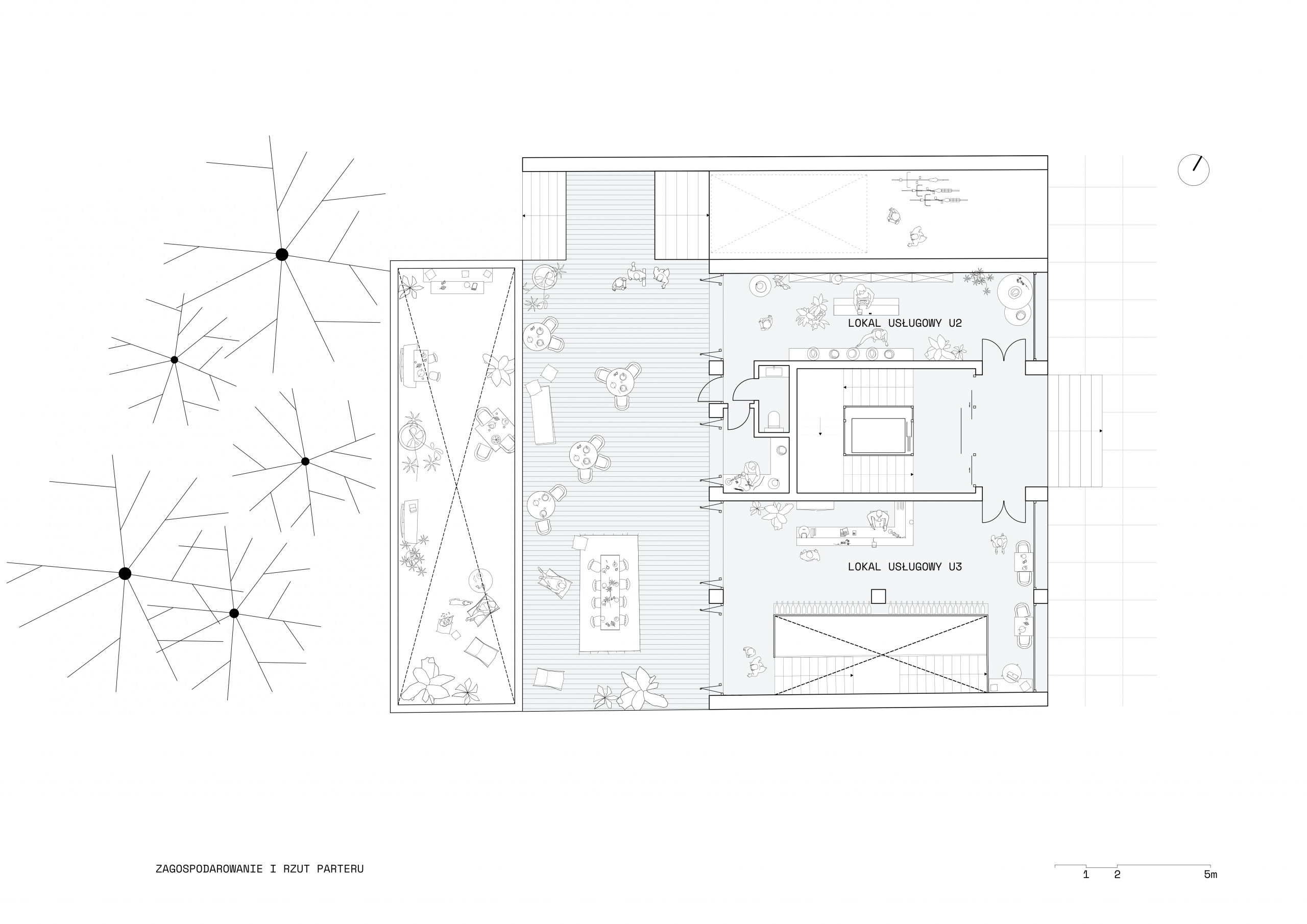
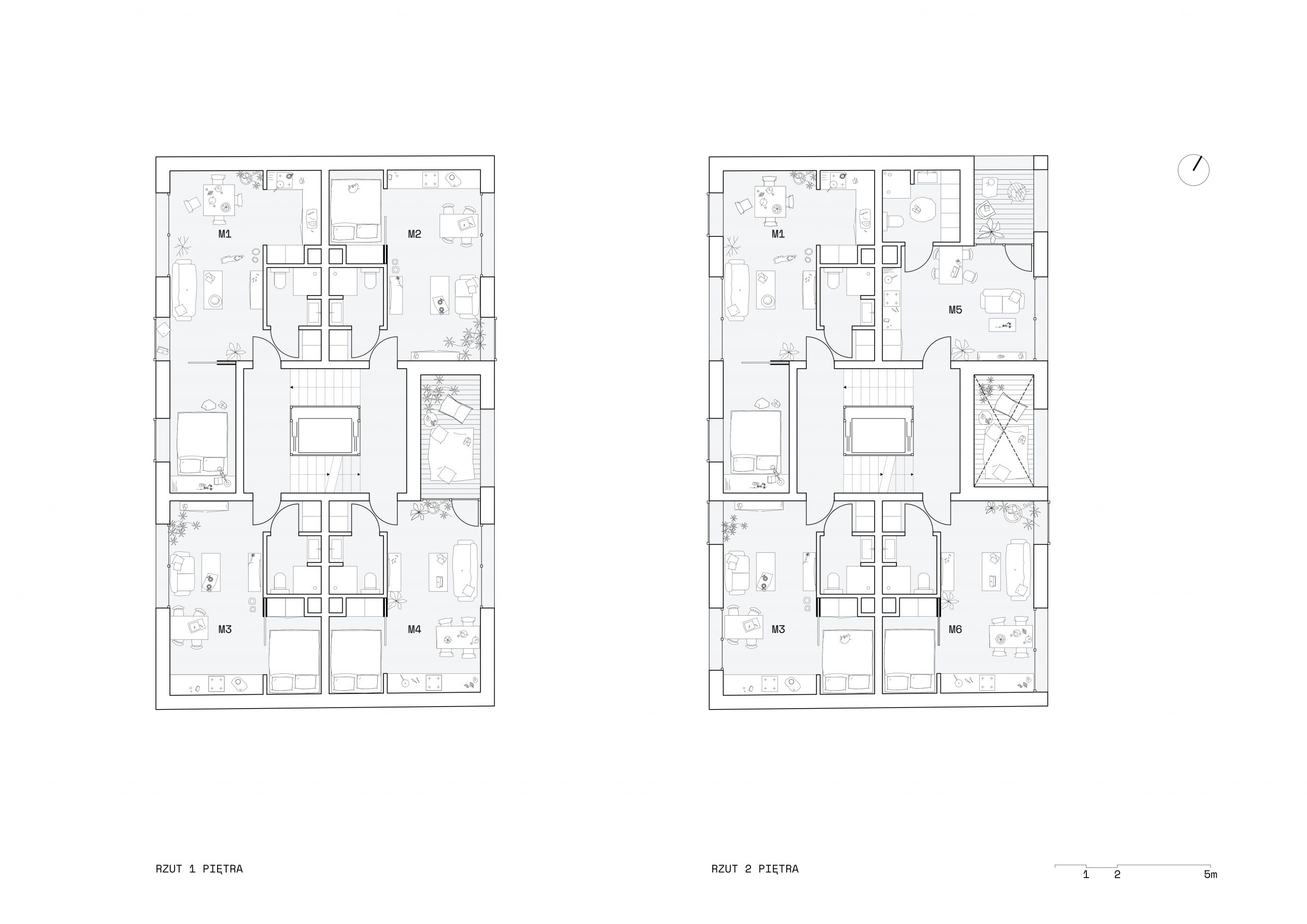
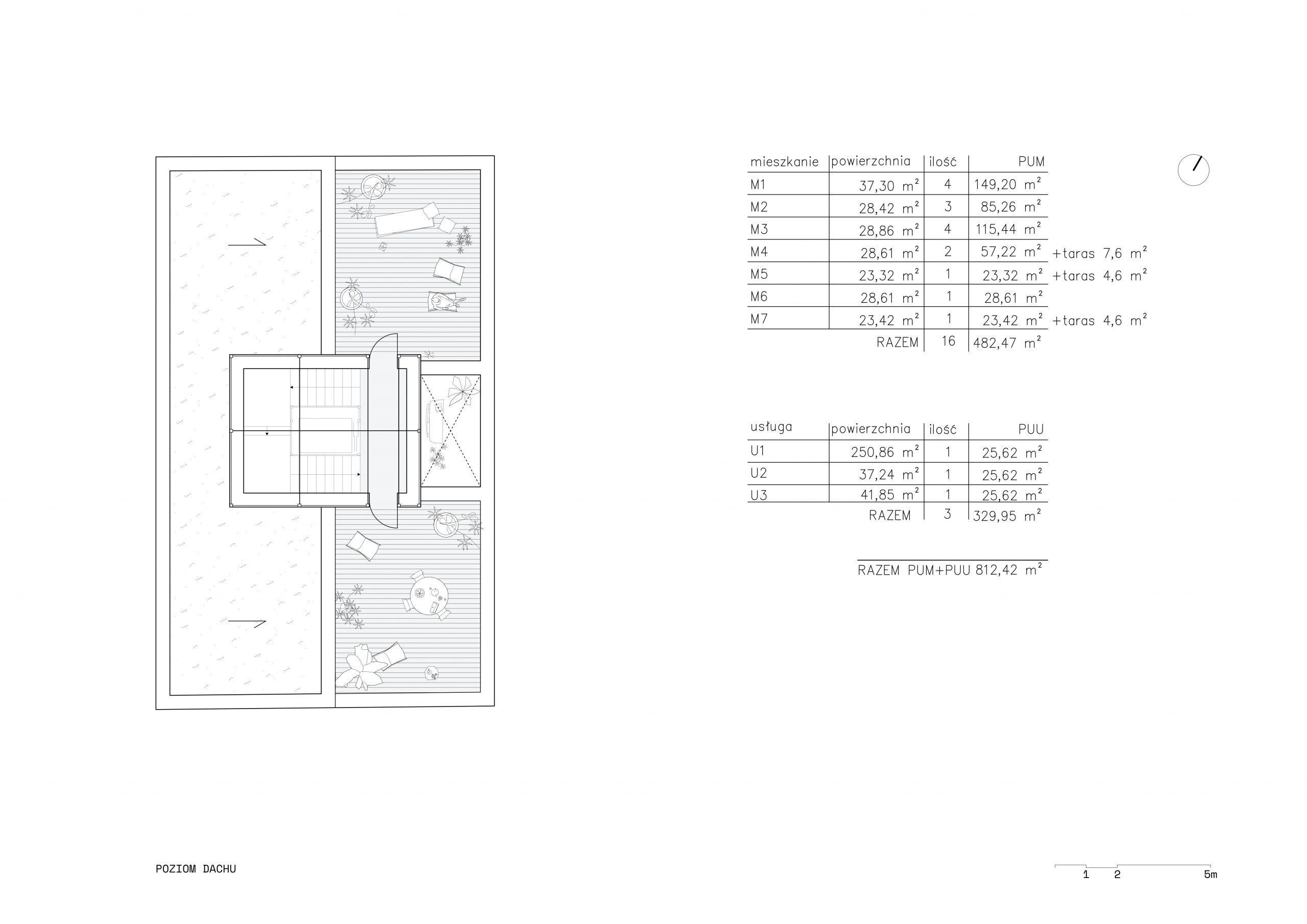
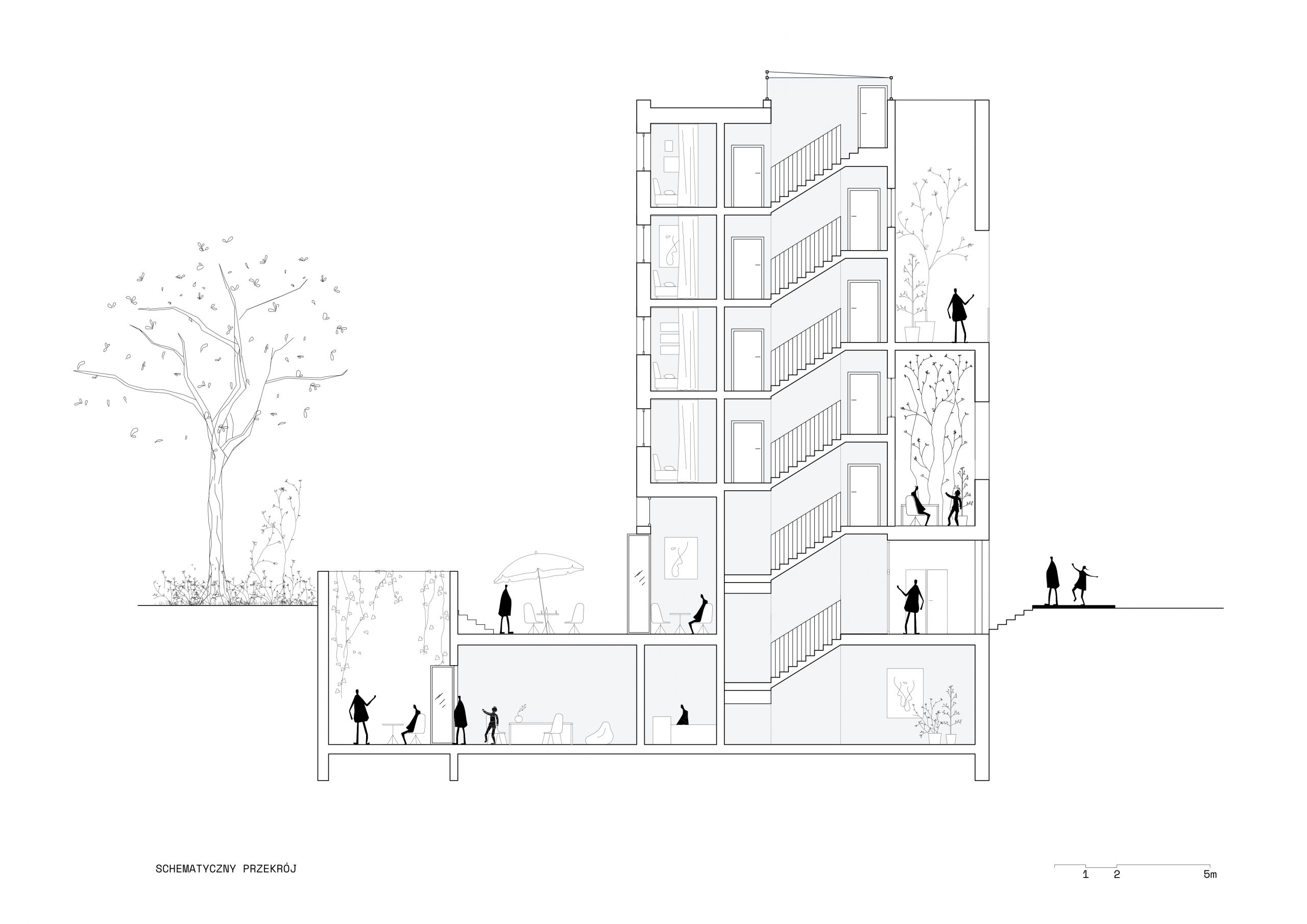
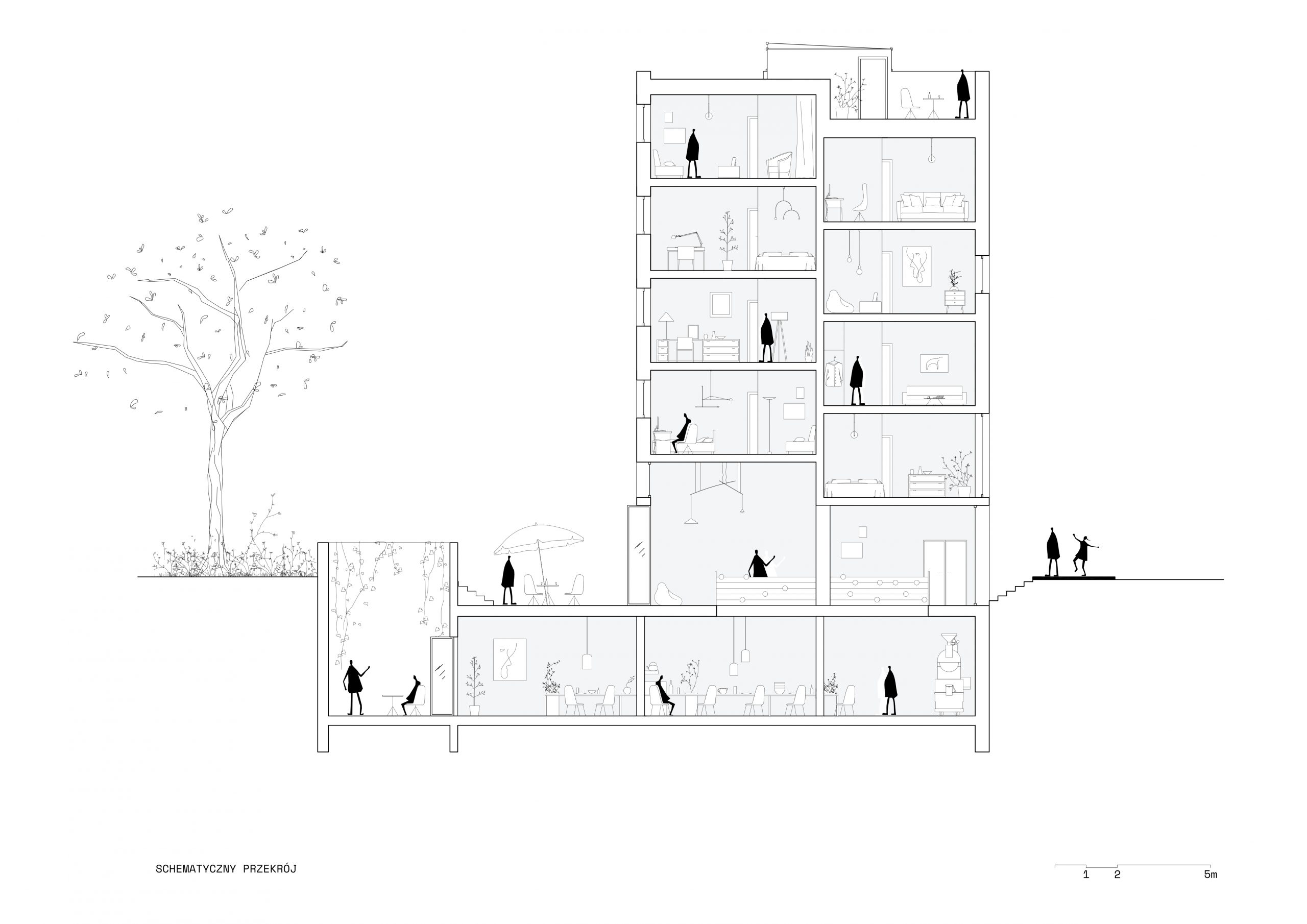
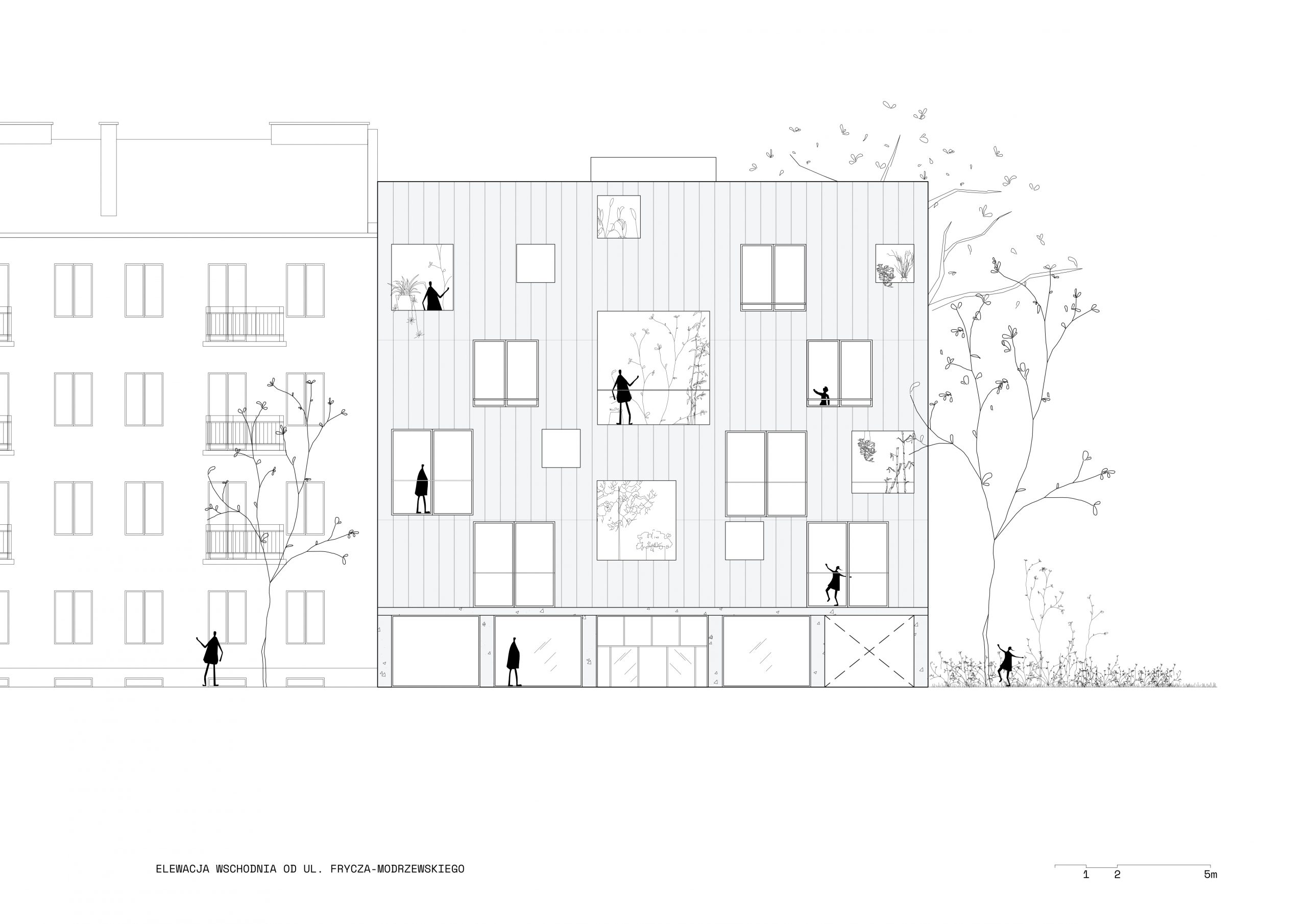
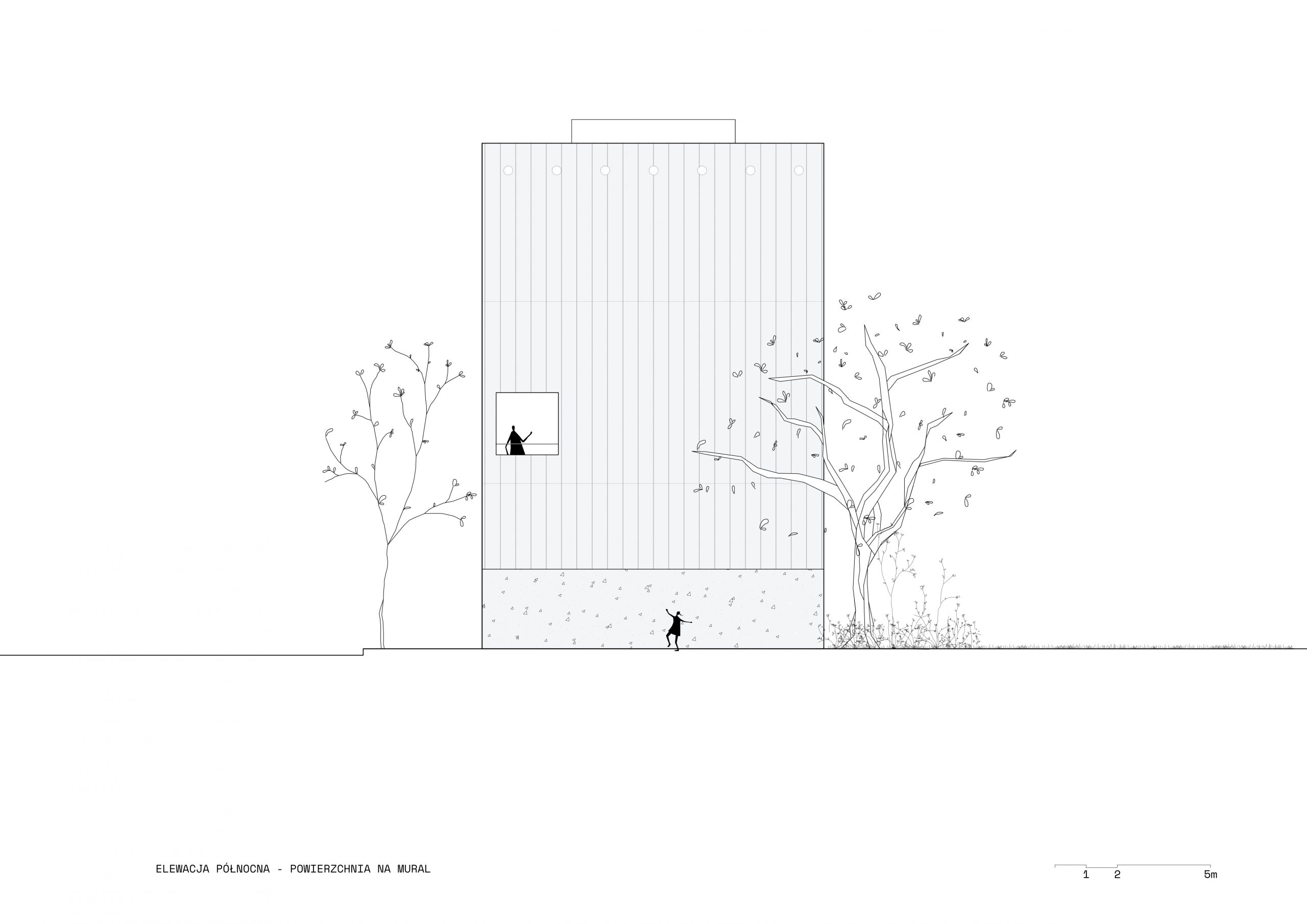
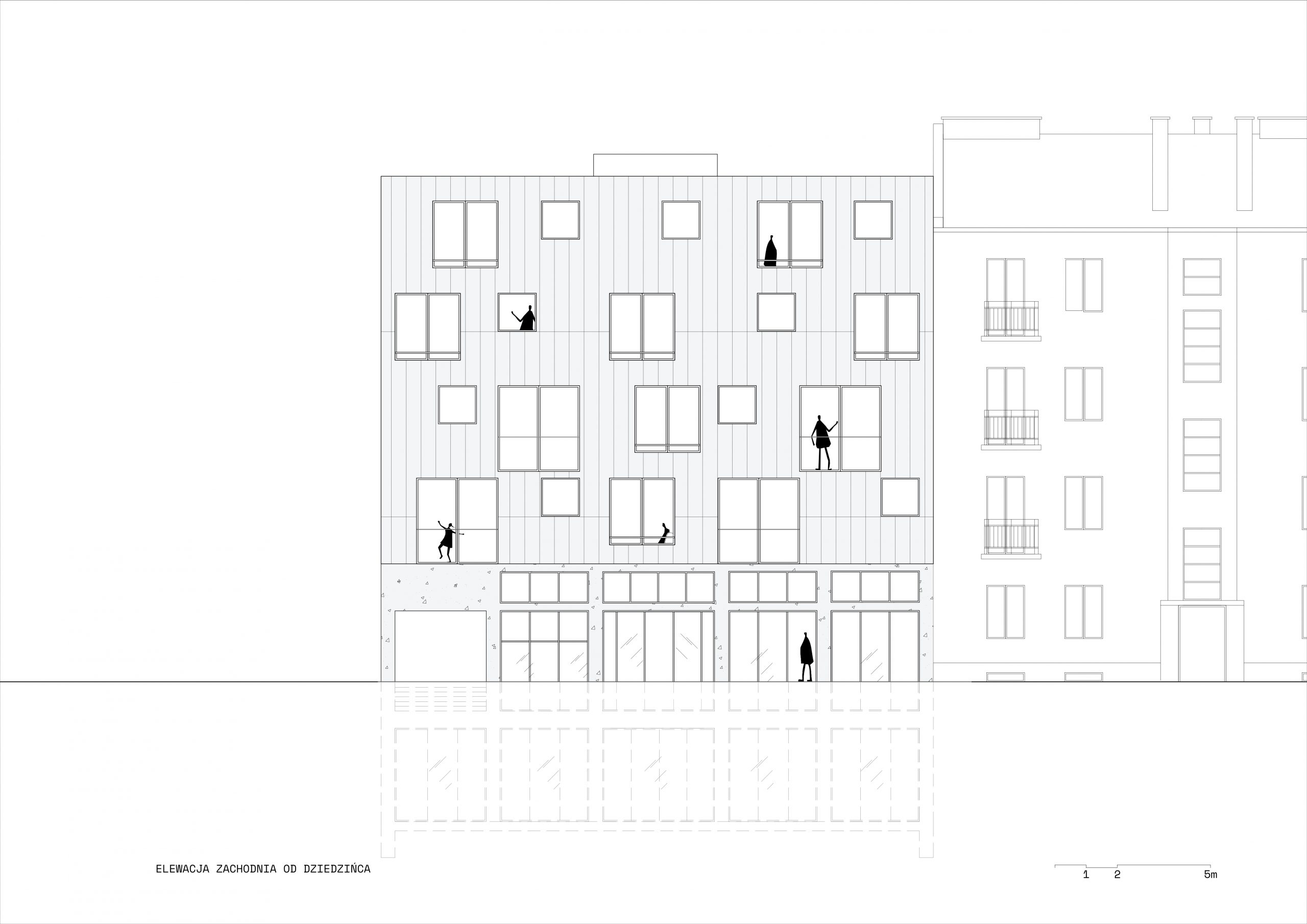
On the ground floor, we have provided space for craftsmen or young people who would like to continue the traditions of these plants, participate in workshops and learn. At the moment, most of these professions are very rare: leatherworkers, engravers, shoemakers and tailors.
There is a place for a workshop, a coffee roaster with a cafe, or a pastry shop, like the one with the iconic sweets at Rondo Wiatraczna.
According to the provisions and interpretation of the local plan, there is no need to build a giant underground garage with spaces for cars. All residents of the city could ride their own bikes, scooters or skateboards. We have planned a large warehouse in the basement with an elevator.
An important element is the “neighborly” interaction, so the building has several zones where residents can meet, relax or engage in activities.
On the top floor there is an exit to a shared terrace covered with greenery, where you can eat or work at the shared table. Alternatively, relax after a working day with a local beer in hand. The roof itself is designed as a wild meadow with places for beehives for the city bees. In the facade there are places for birdhouses, for example Jeżyków, which catch mosquitoes and flies. Wherever there is a place, plants grow, often cleaning the air.
On level -1 there is an open-air space for activities such as yoga, bouldering, meditation, drawing etc .. and coffee tables.
On the ground floor, entire sites are dedicated to local dying professions that cultivate a student-master relationship.
The facade of the building is made of gray prefabricated glued wooden panels.
On the top wall there is a place for a mural – a large one, with local themes, which can change with next generations of tenants.
Main construction idea is to make most of the object of wooden prefabricates, as it used to be in the history, for example for the construction of Drewniak Burkego building.



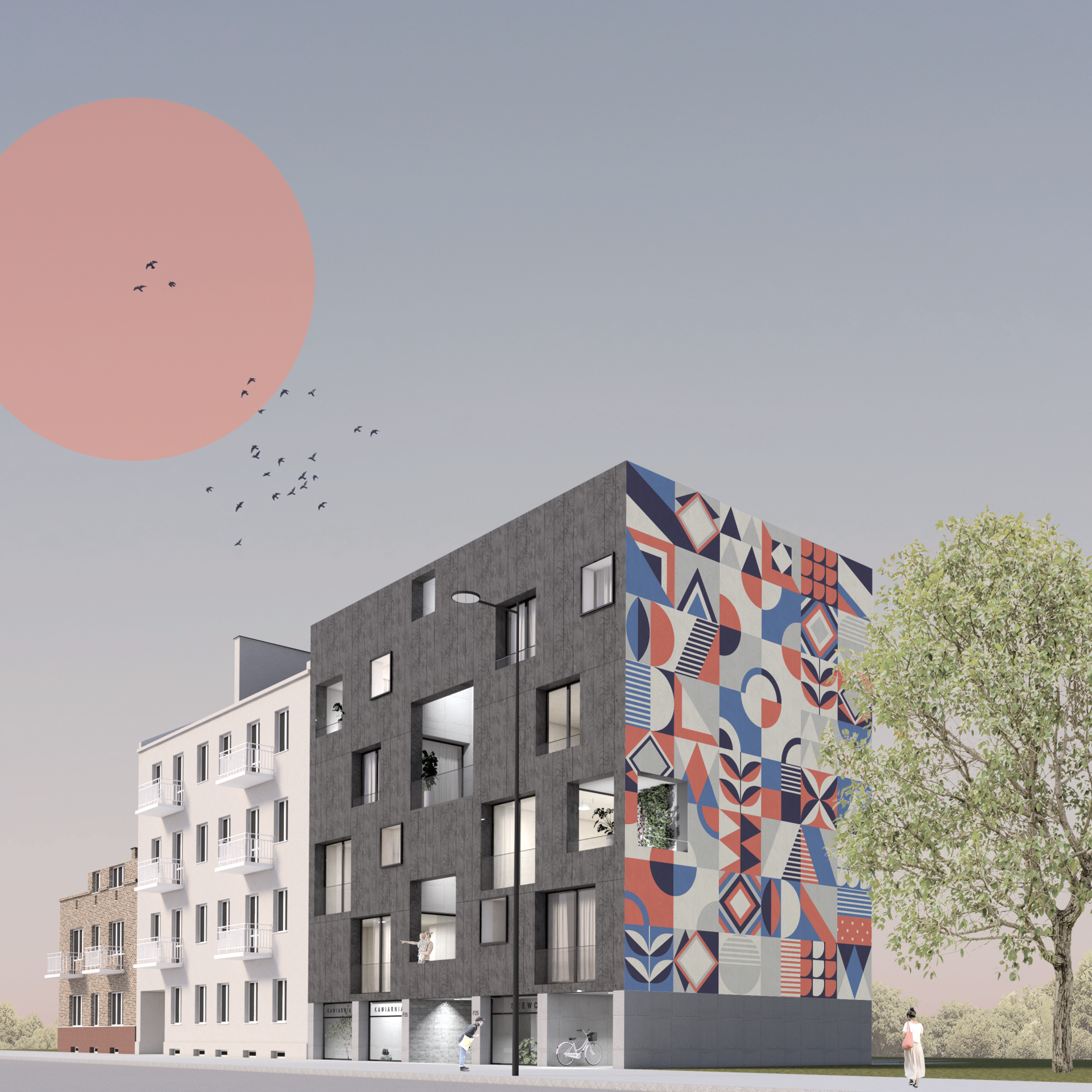
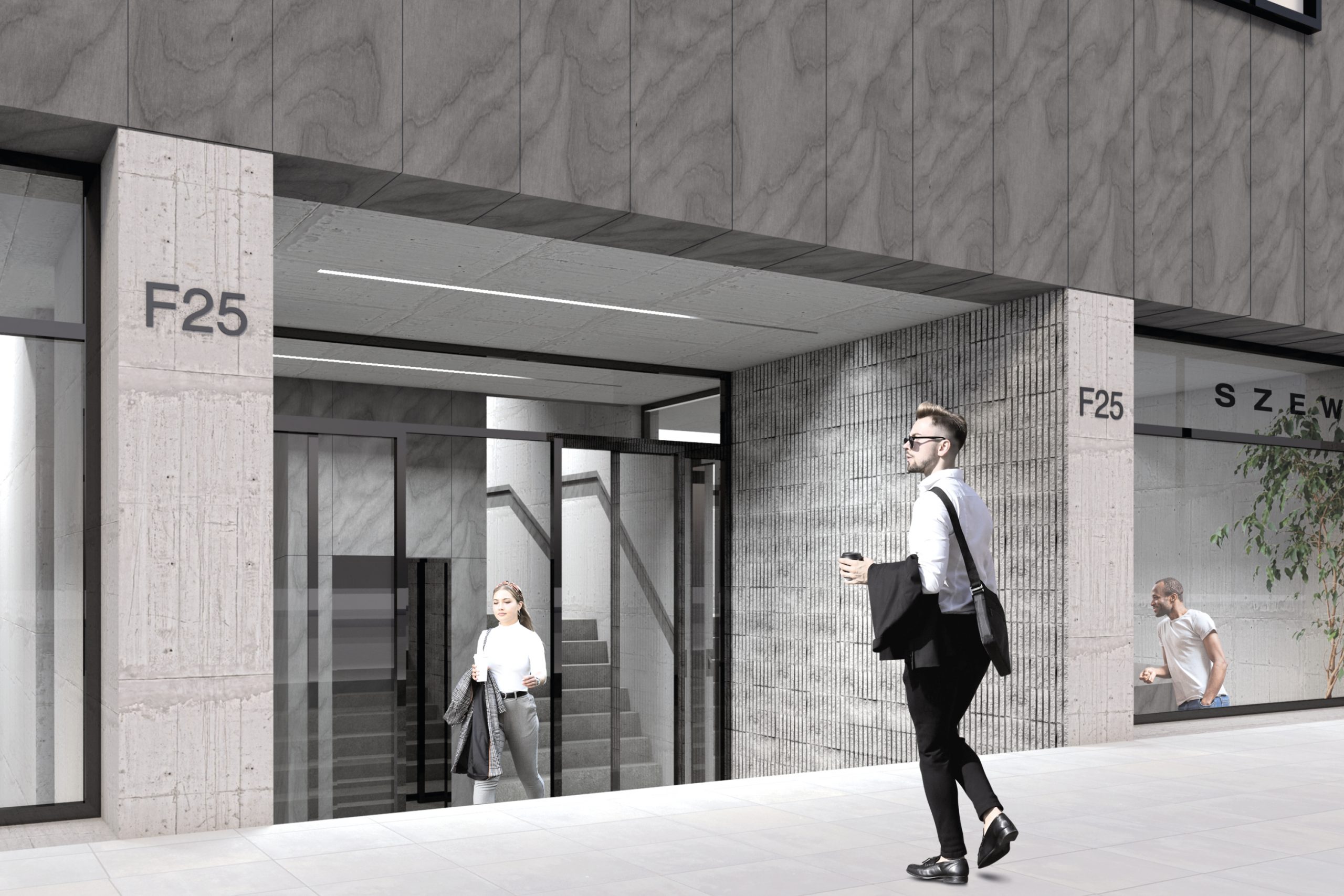

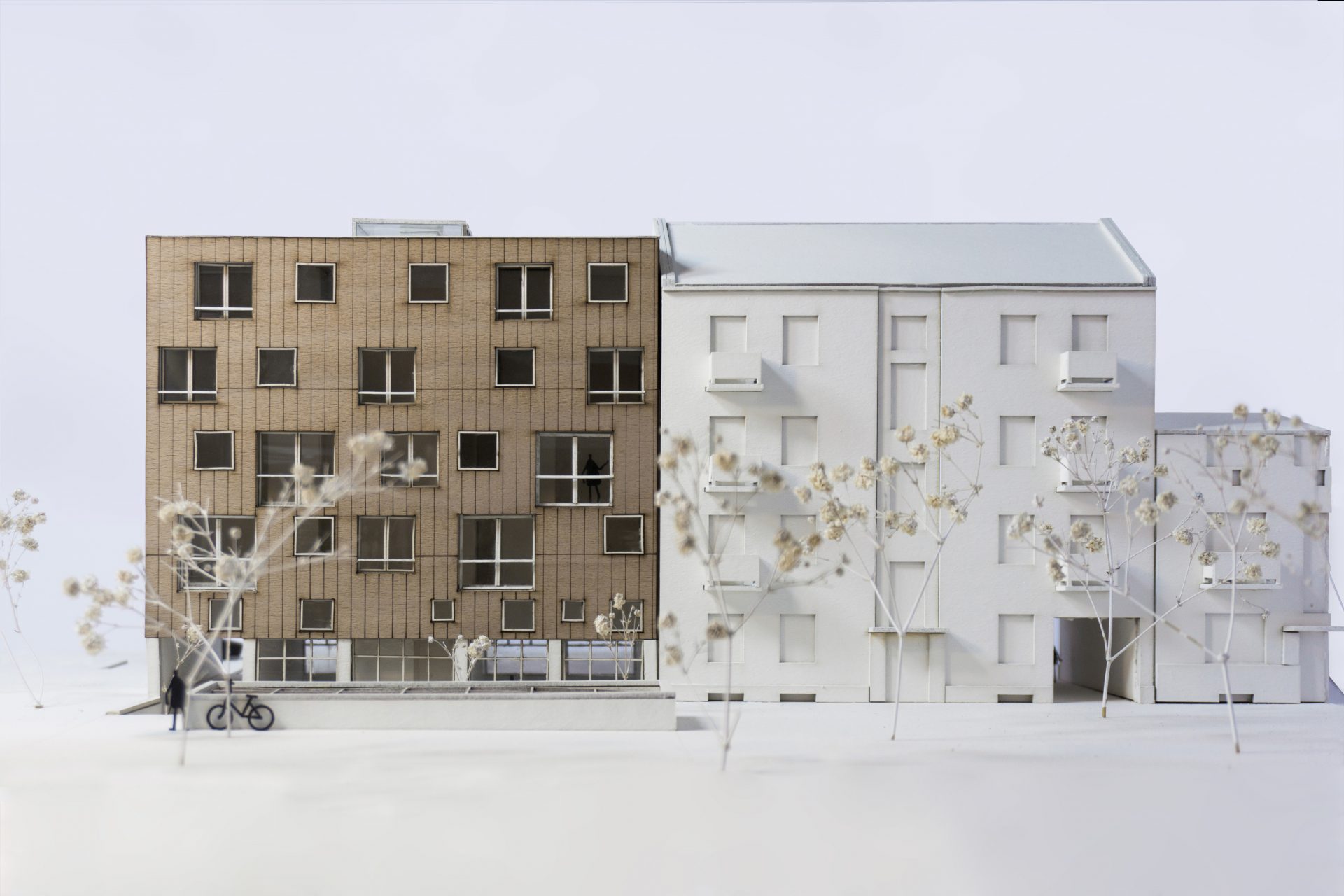

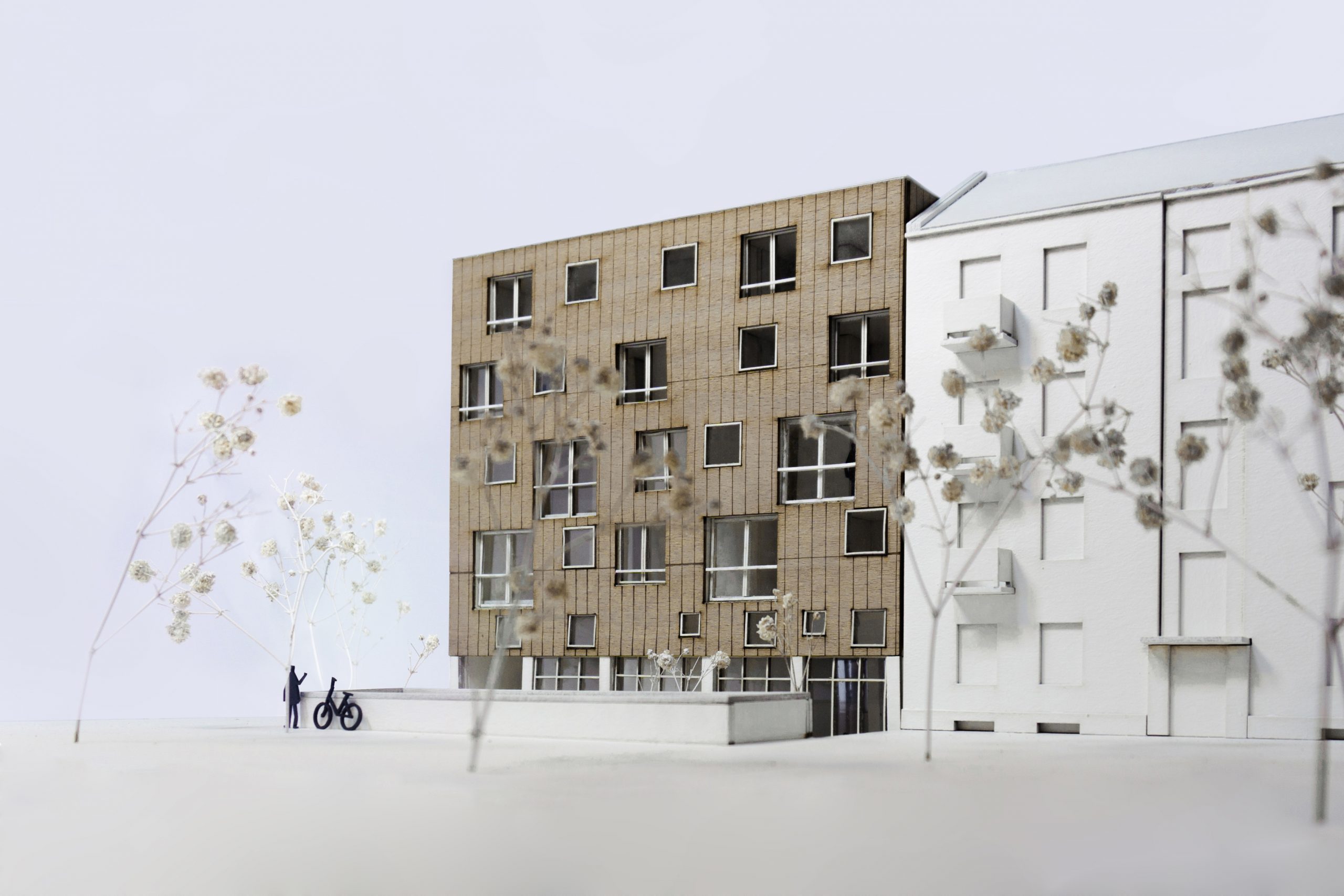
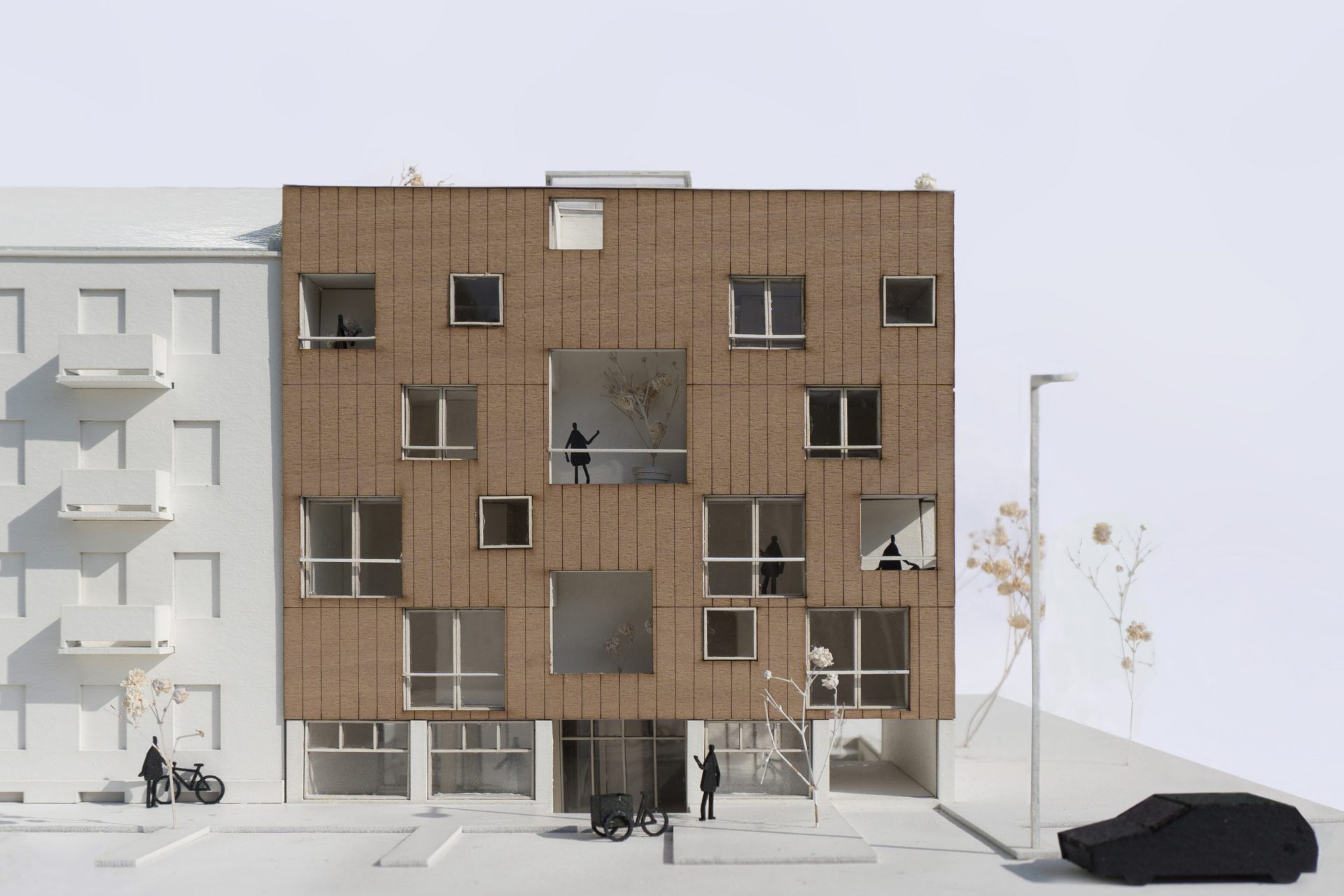
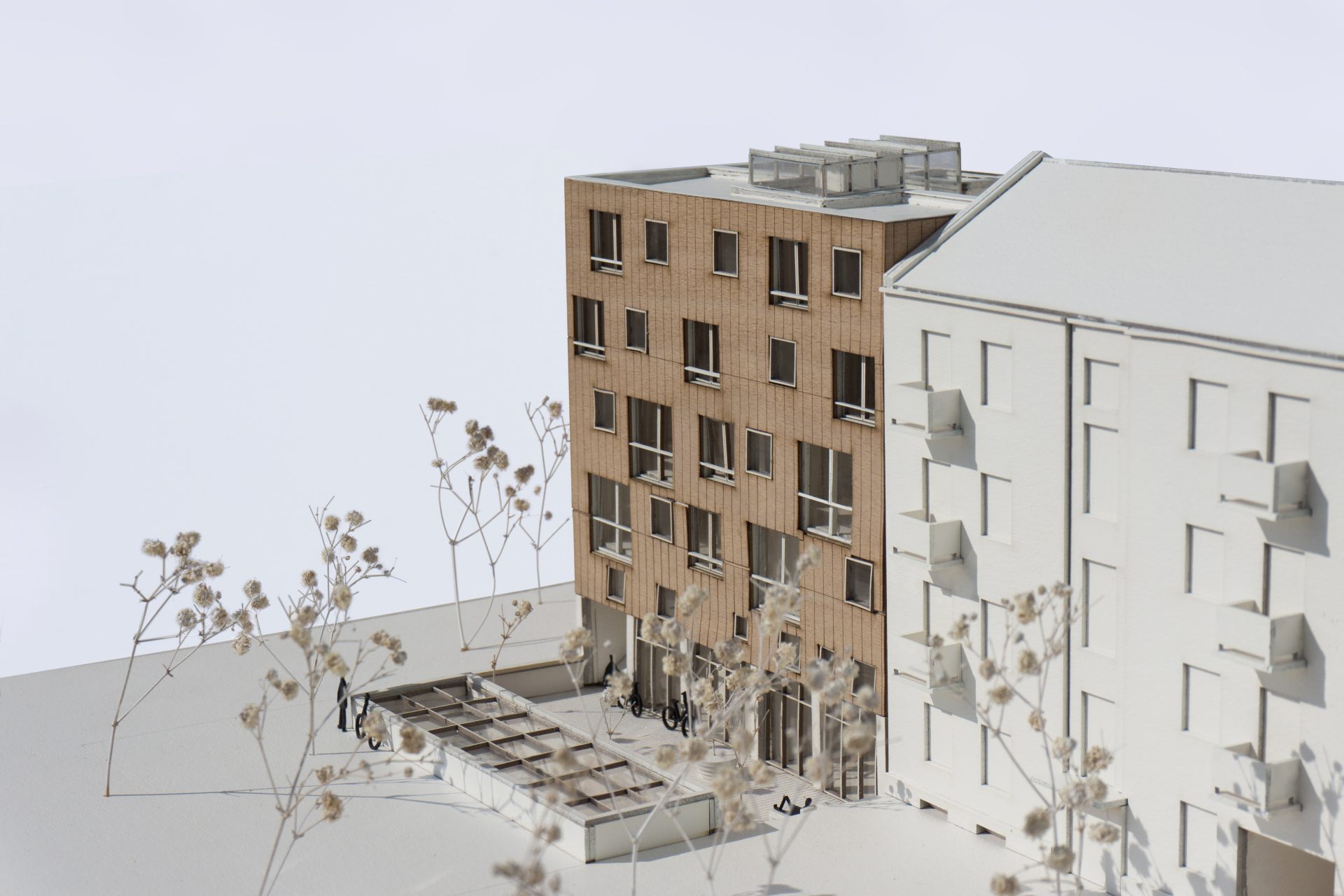

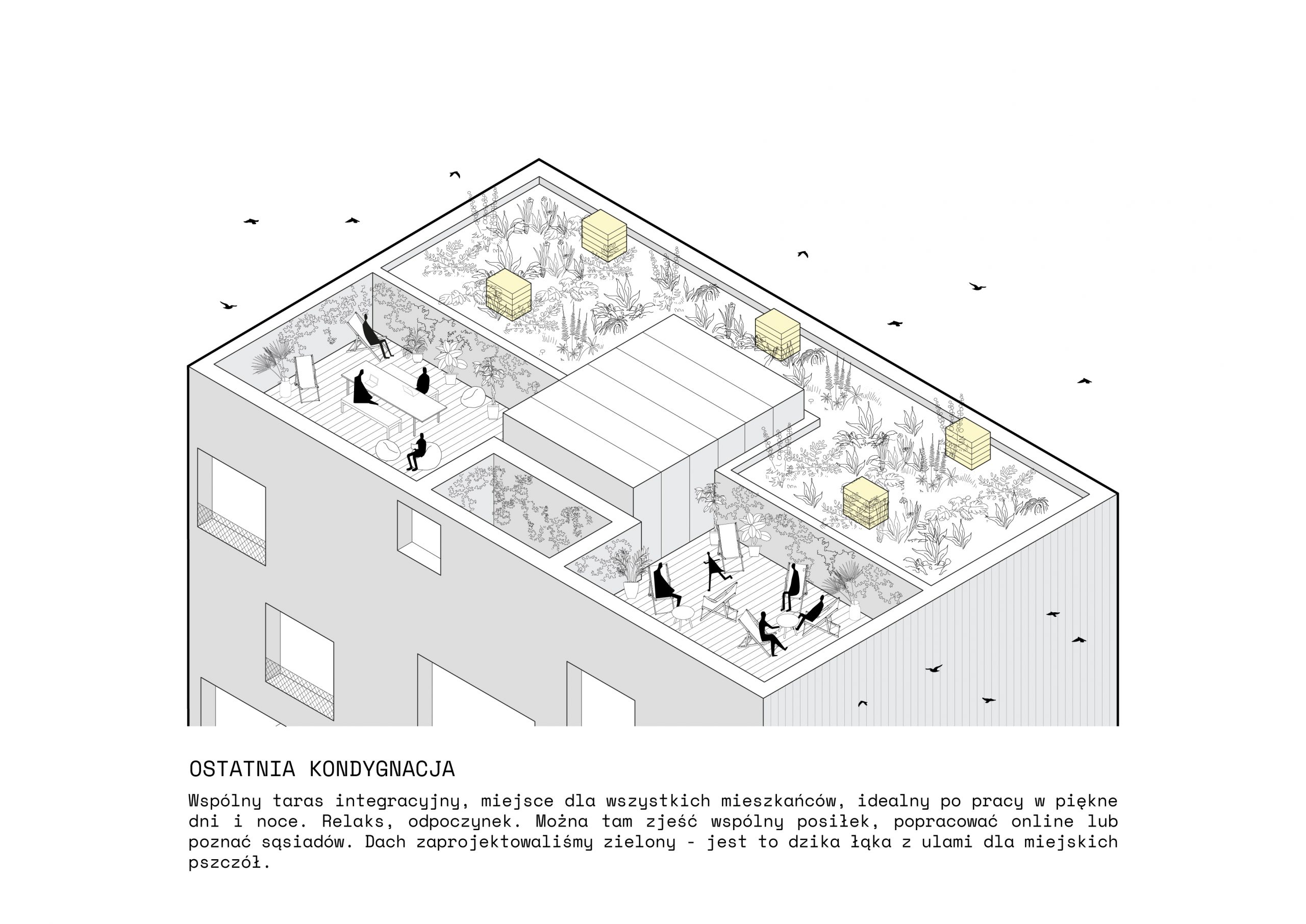
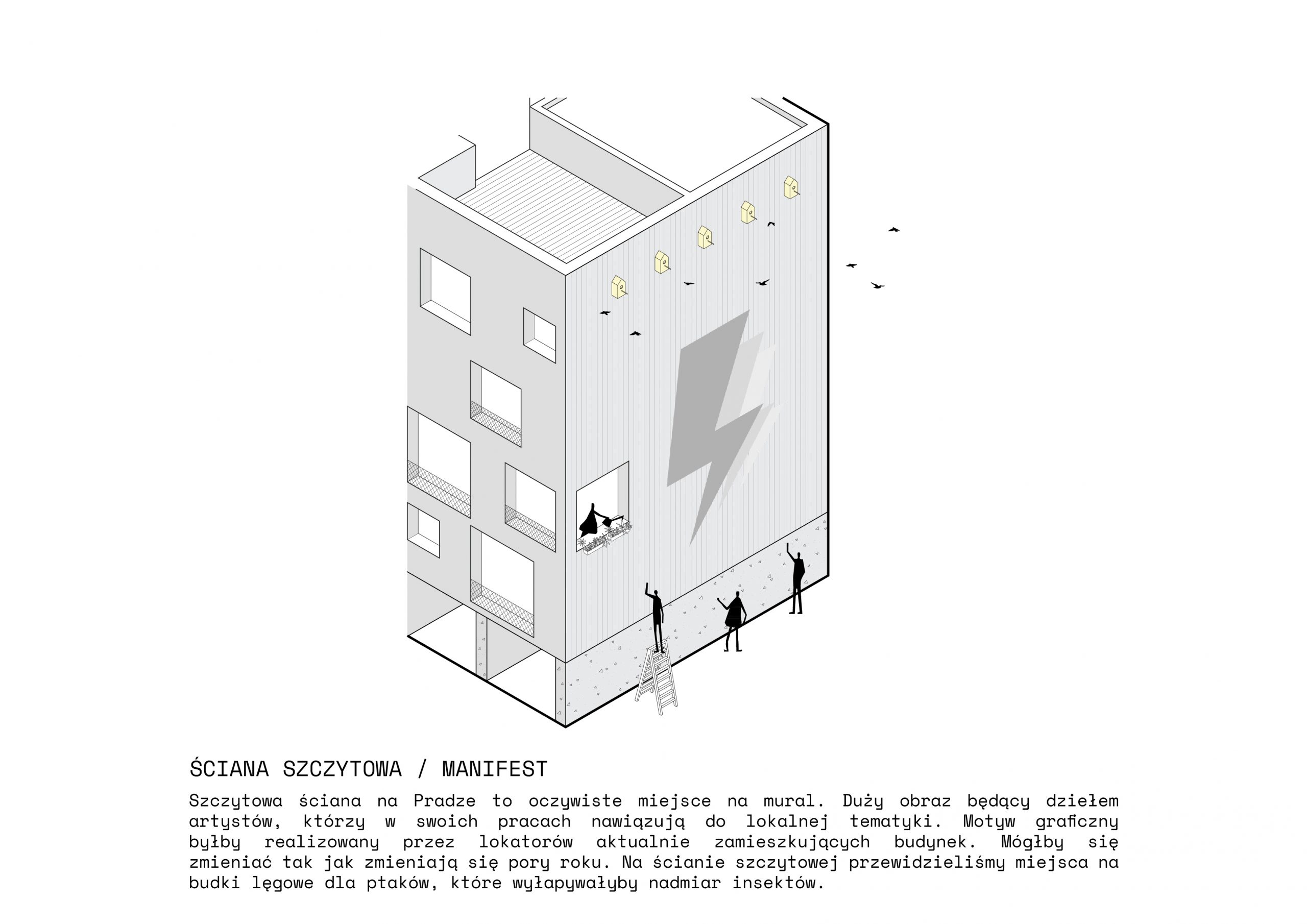
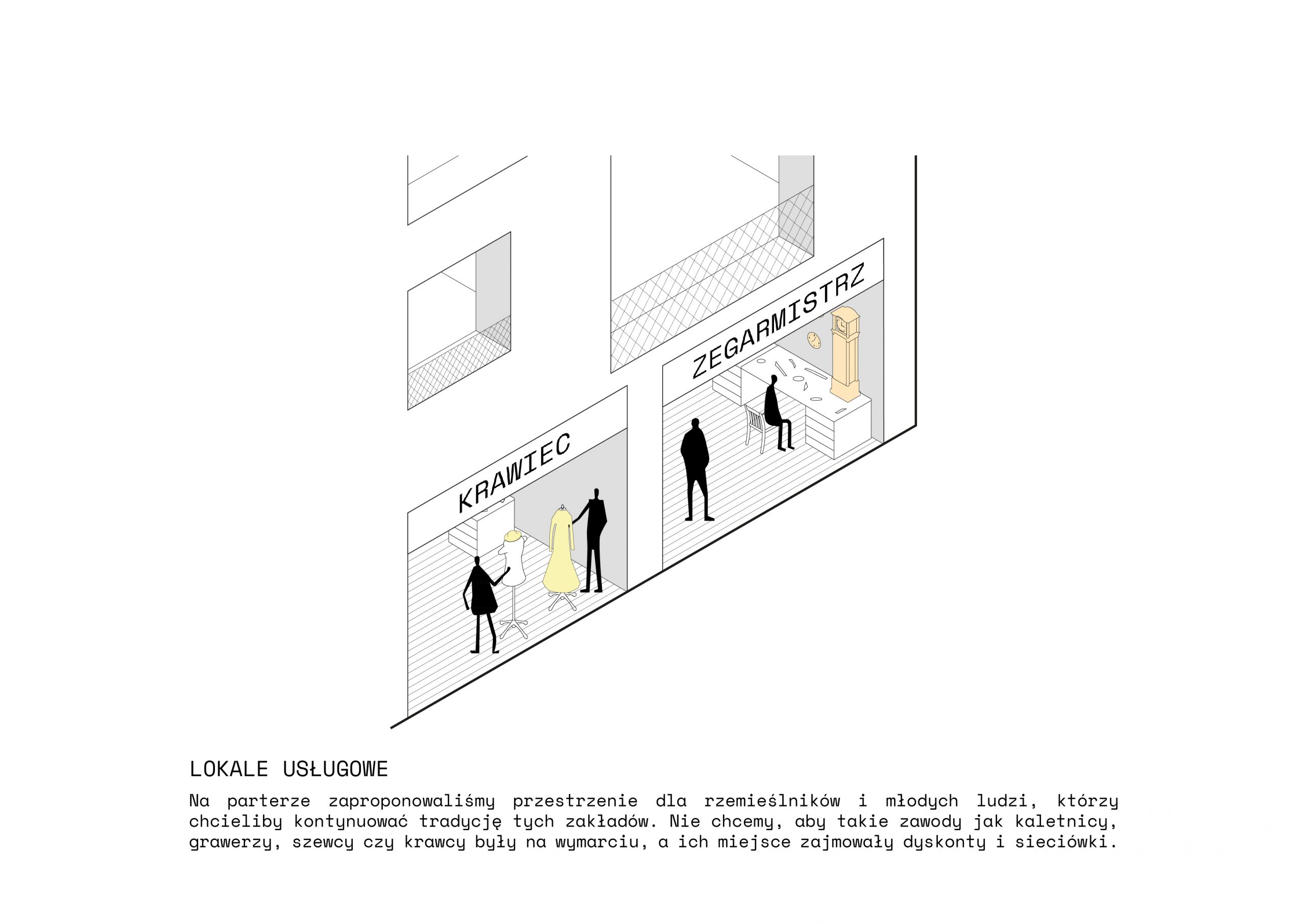
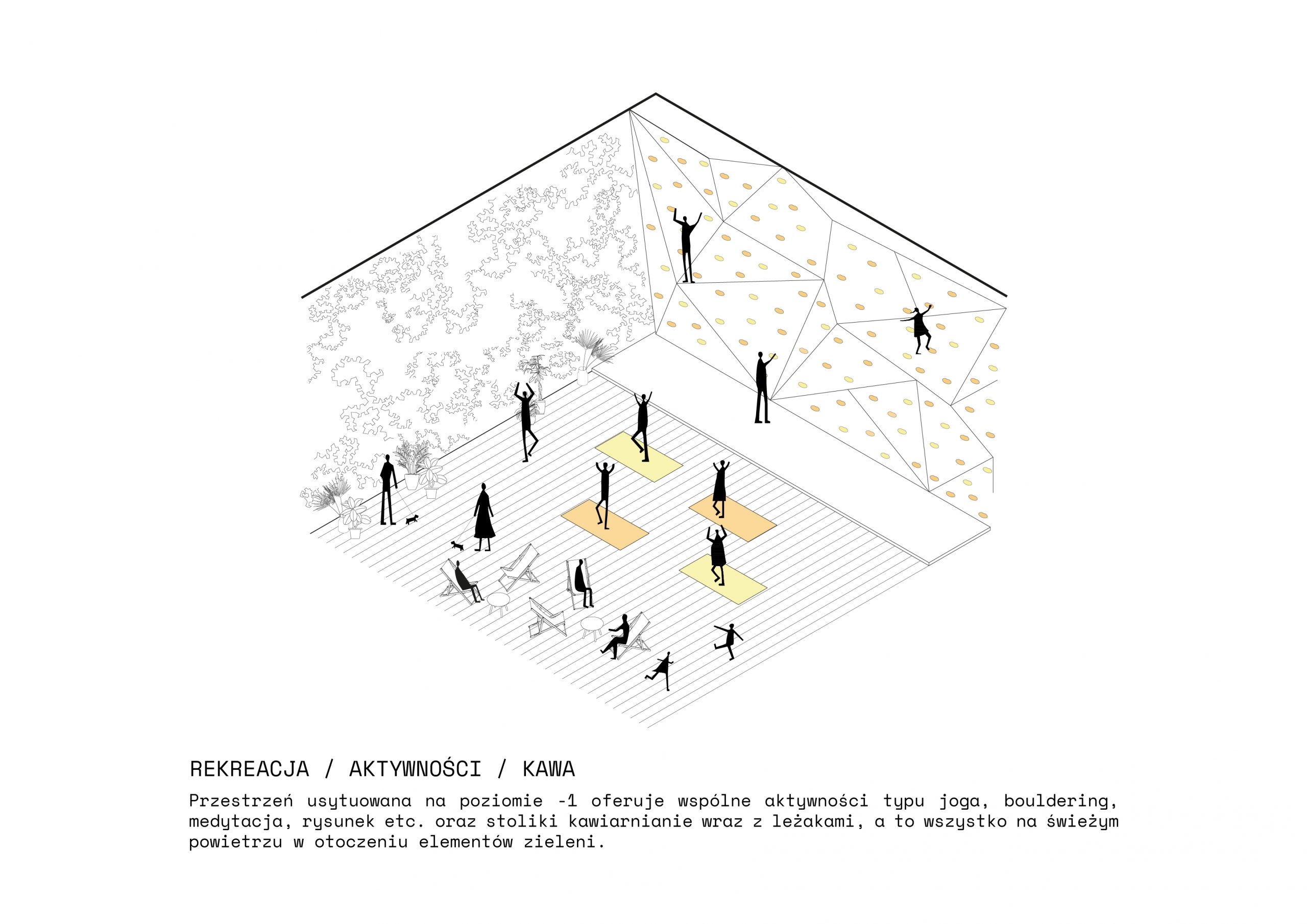










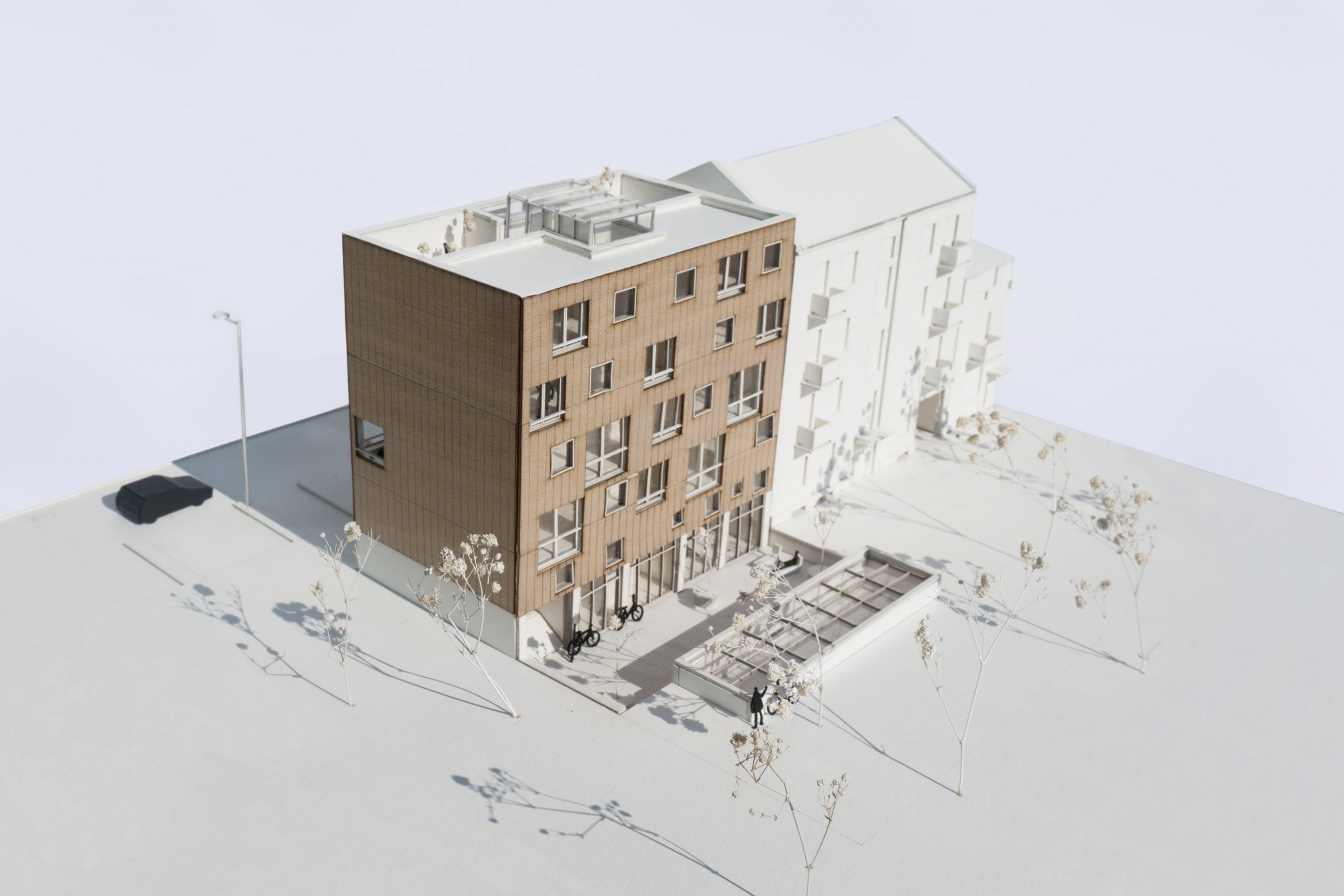
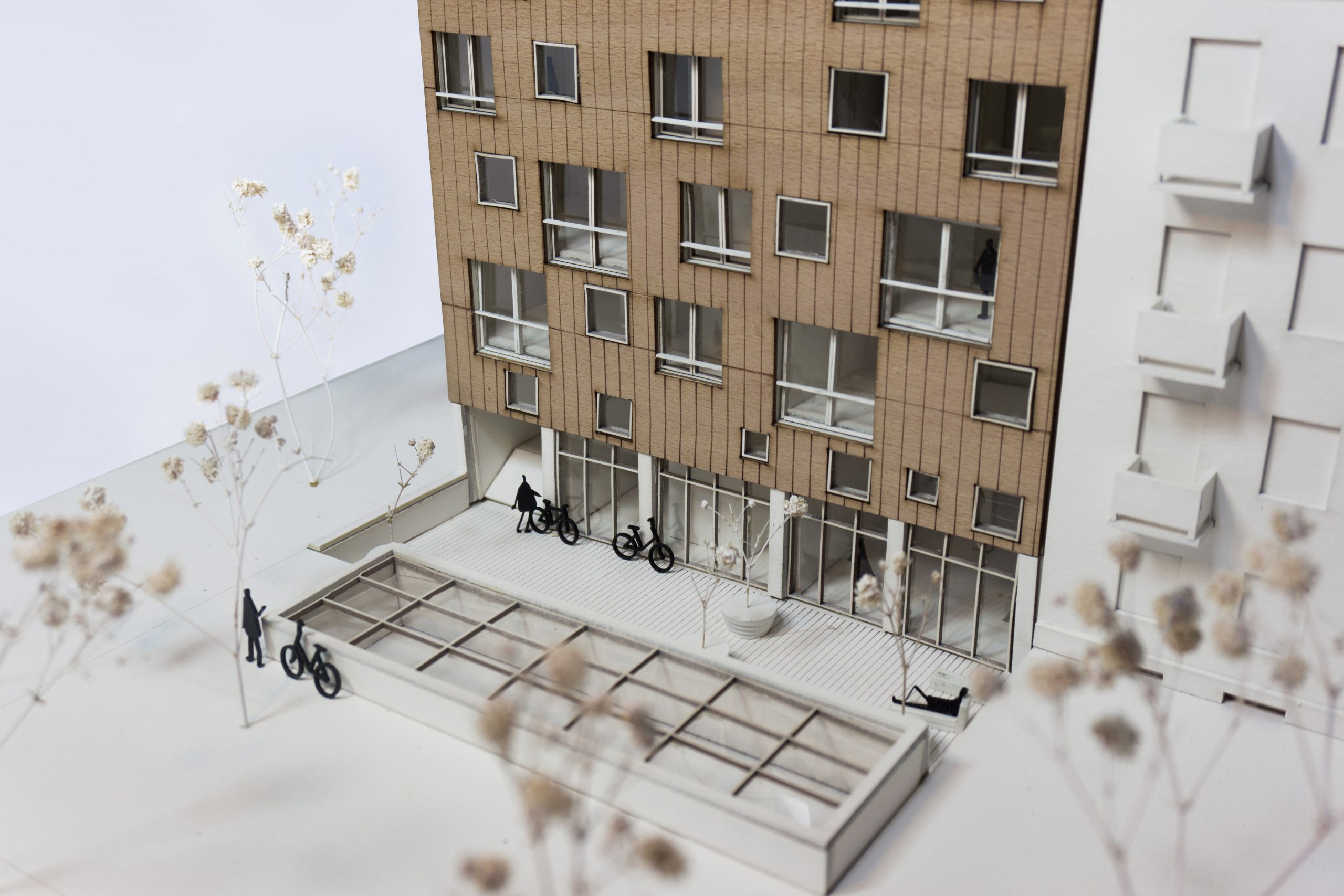
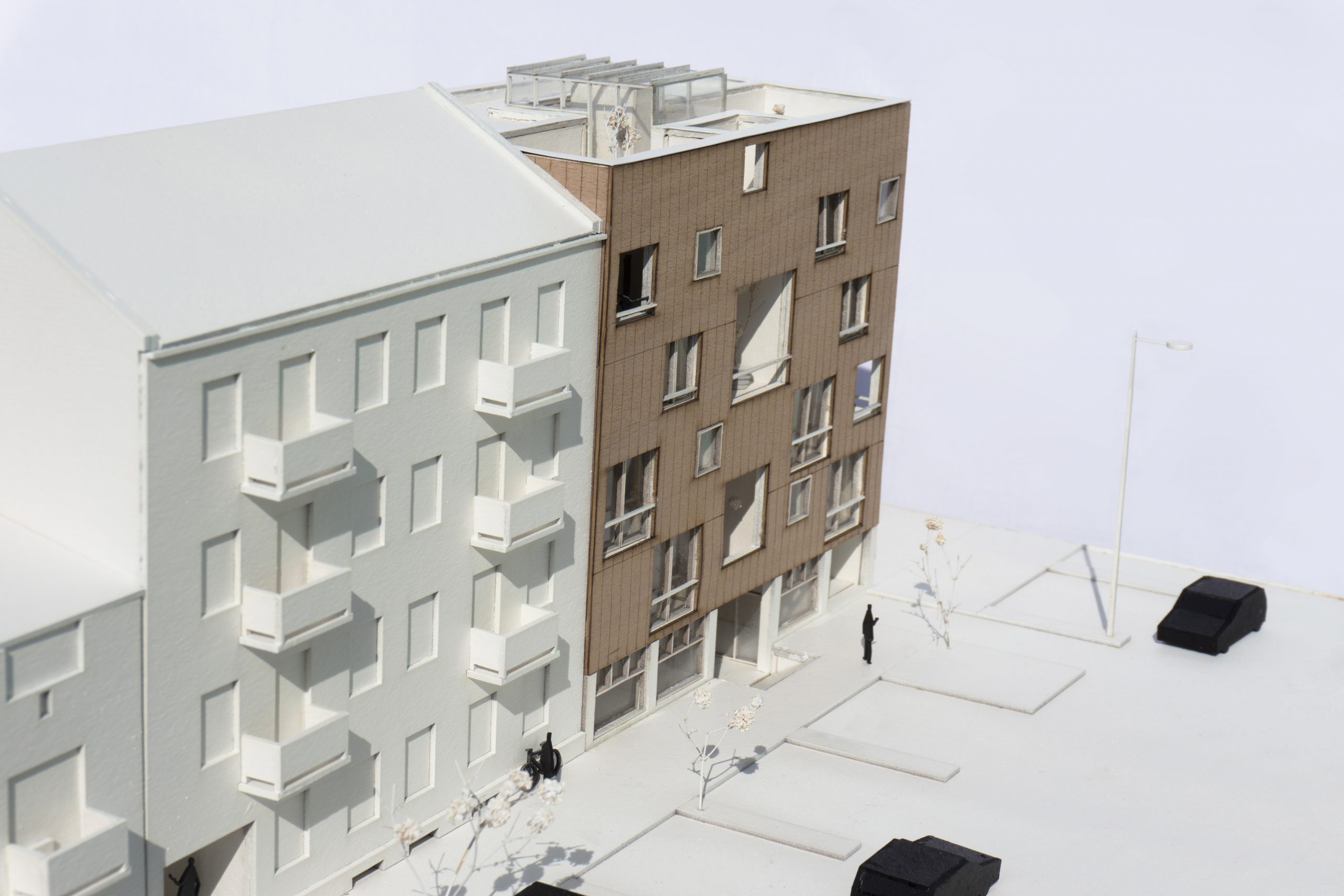
 Previous project
Previous project